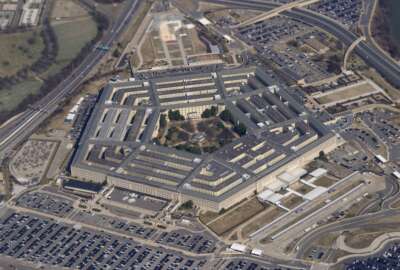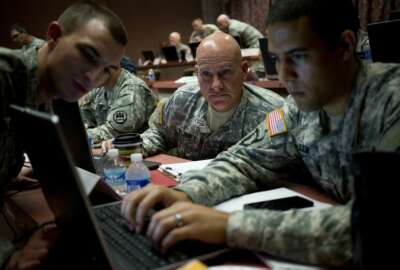House version of 2024 NDAA would create a DoD office for academic engagement
The Defense Department plans its future cyber workforce with a strategy that expands its work roles and seeks closer ties to academic institutions.
The House version of the 2024 National Defense Authorization Act includes a provision to start a DoD office for academic engagement relating to cyber activities as pathway for hiring and retaining more cyber workers. As the Defense Department fine-tunes its strategy for expanding its cyber workforce, a major tenet of the plan involves partnerships with academic institutions.
The NDAA directs the Pentagon to “establish an office to maintain and oversee any activities of the Department of Defense that pertain to the relationship between the department and academia, including with entities involved in primary, secondary or postsecondary education with respect to cyber-related matters.”
At an AUSA Army cyber event June 14, Patrick Johnson, director of the DoD CIO’s Workforce Innovation Directorate, said the only way to build a future workforce in a quickly evolving field is to focus on education.
“I need a workforce of problem solvers, capable of adapting quickly to any problem that comes down the line. And we do that through education and building that pipeline at the same time,” Johnson said.
The Defense Department released its cyber workforce strategy March 1, and as the strategy continues to evolve, Johnson said the focus needs to be as much on developing talent in-house as on hiring.
“The data we gathered is we have to have a better way of identifying the talent we need and acquiring talent. And it starts with breaking with the traditional federal hiring process,” Johnson said.
The Pentagon has about 225,000 cyber employees split roughly into one-third contractors, one-third civilian employees, and one-third military. Johnson says the department also has about 30,000 unfilled positions throughout its cyber workforce.
“It isn’t just a federal government problem, but it’s a national problem. We recognize that with the strategy we have to develop more pipelines into the Department of Defense. But what we’re trying to drive is a paradigm shift,” he said.
Part of the paradigm shift should be using the military model for identifying and developing talent in cultivating the civilian element of the workforce, Johnson said.
“Something the military does is it builds its own and it does that really, really well. We need to replicate that on the civilian side and assist in our strategy because it is a total force strategy,” said Johnson.
The new strategy classifies employees according to the work they do. There are currently 71 work roles defined throughout the IT and cyber workforce that will be synced with Cyber Command in the future to offer more options in compensation. Positions dealing with software were expanded from two work roles to six.
“In terms of compensation, we’re actually paying compensation based on work roles, not on occupation. By setting up our work roles, we can identify our enablers,” Johnson said.
The strategy will look for ways to work with the academic world and with industry as it sets out a plan to build a cyber force for 2030. One of the ways DoD can attract workers is the promise of a long-term career. While tech workers in the commercial sector often hold jobs for an average of three to four years, the military can offer a long-range program complete with education, different positions, and an attractive retirement. Johnson said DoD workers should also have the flexibility to flip back and forth between industry and government.
“We need to create that revolving door and pool our talent because it’s not one person or one organization that is going to solve it. We train and develop really well. And I think we have the ability to kind of flip that paradigm in terms of supply,” Johnson said. “I’m okay with flooding the market with our talent, because everybody we send out is an ambassador for the Department of Defense. If people look at us as a place to start their career, they are walking advertisement.”
Copyright © 2025 Federal News Network. All rights reserved. This website is not intended for users located within the European Economic Area.
Alexandra Lohr, a former staff member, covered the Defense Department for Federal News Network until September 2023.







